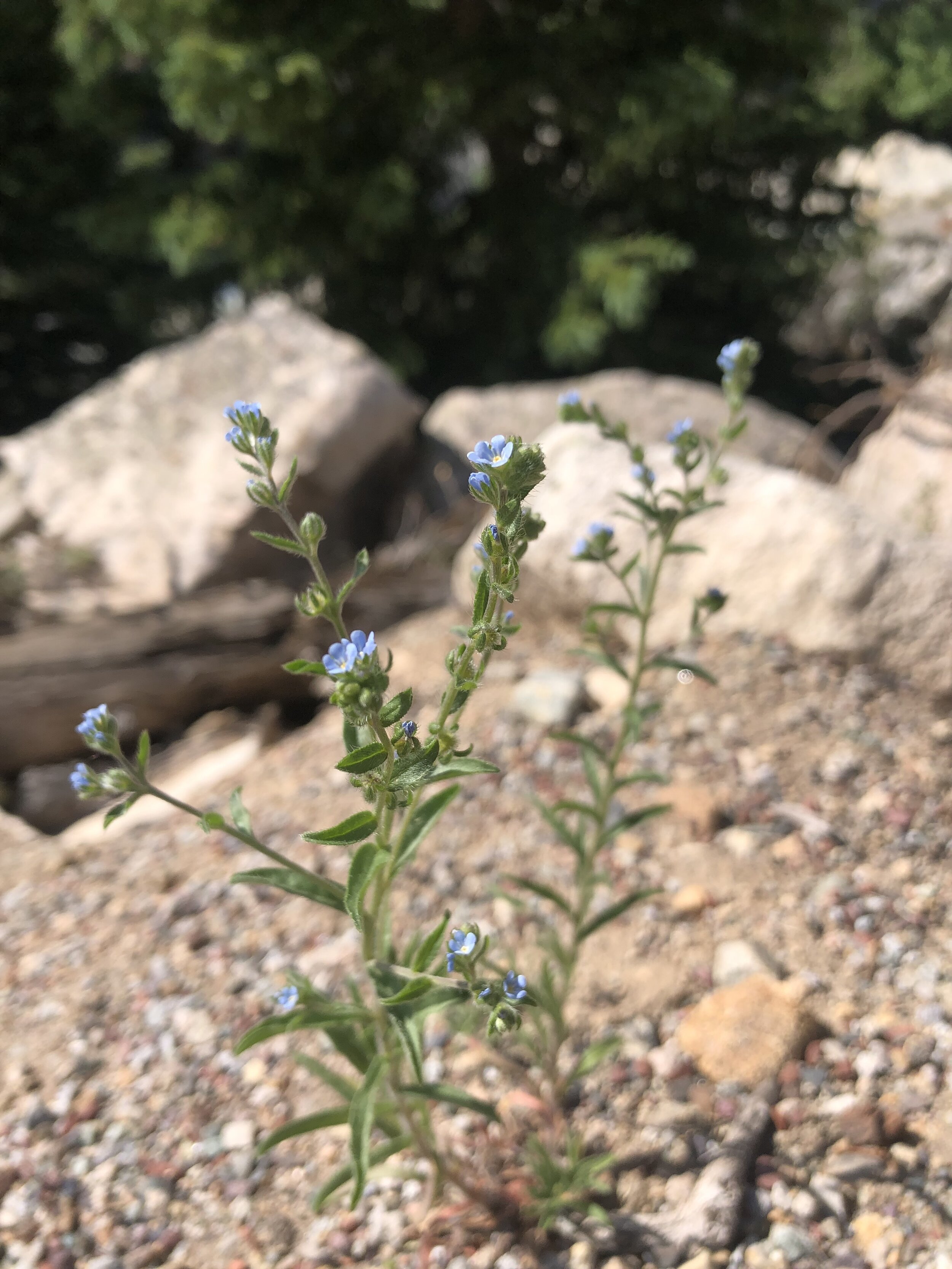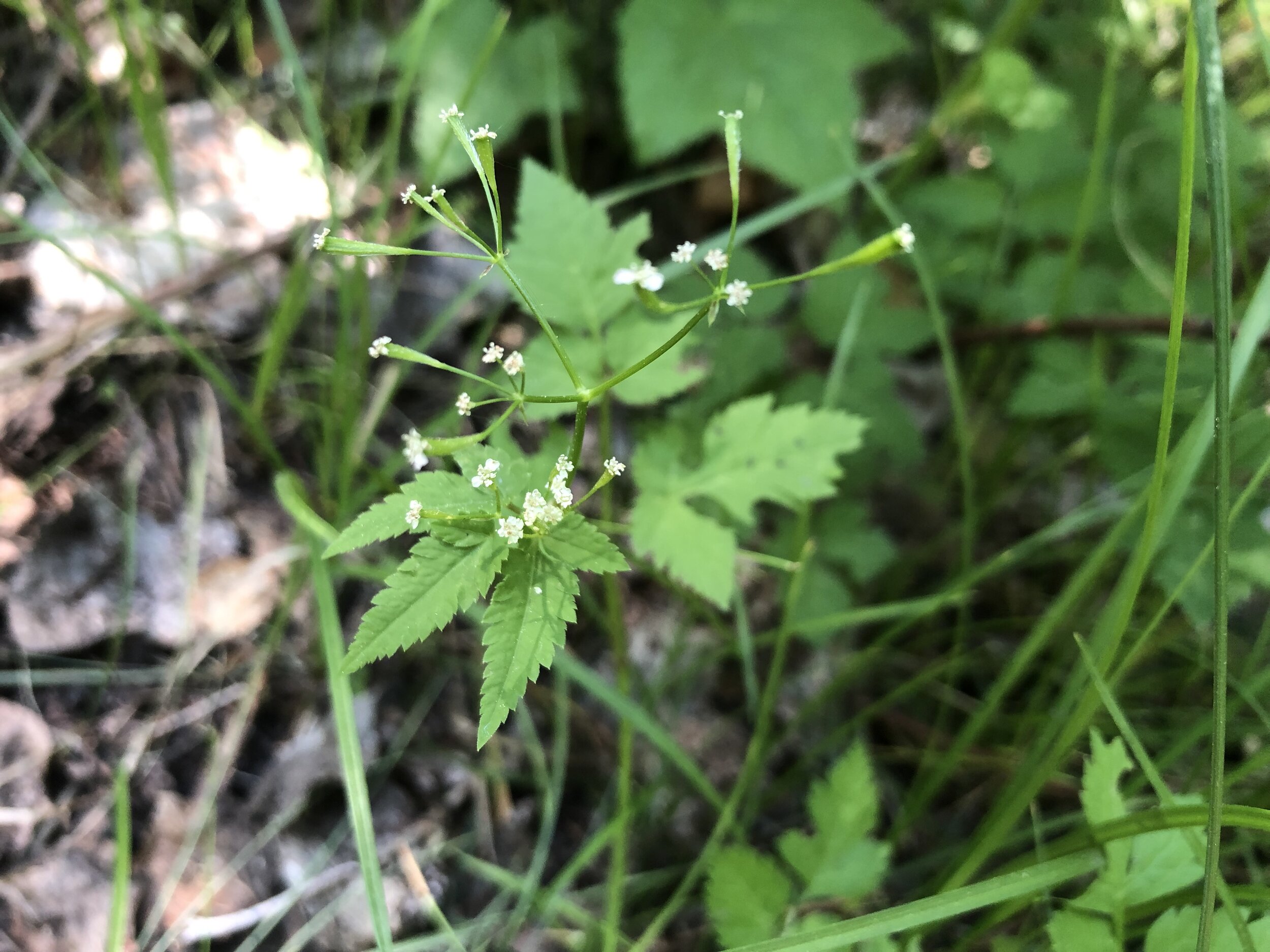Hymenoxis grandiflora, June 23, 2021
Common & scientific name
Old-Man-of-the-Mountain, Hymenoxis grandiflora
Family
Sunflower, Asteraceae
Location
N.E. of summit, 12,300’
Fun, weird, helpful, or little known fact
This common alpine resident stands out with its comparatively huge flower head and its wooly-hairy stem and leaves. According to Dr. David Inouye, who for 4+ decades has studied alpine plants and their pollinators at the Rocky Mountain Biological Laboratory, just over the Elk Range in Gothic, H. grandiflora grows for 12-15 years without flowering, flowers once, and then dies. So treat every Old-Man-of-the-Mountain you see with reverence, and imagine (if you can) your own last summer . . . .










































